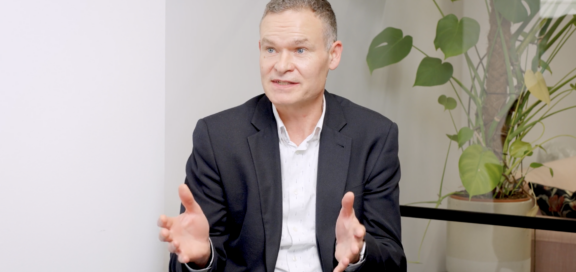
Podcast: What is Market Access in the Pharmaceutical Industry?
About Podcast: What is Market Access in the Pharmaceutical Industry?
Matthew Dickinson; Managing Director, and Sandra Laird; Director of Market Access and Medical Education discuss the intricate world of market access. In this episode, they explore the duality of obtaining permission to prescribe through HTA approval and the subsequent challenge of ensuring that this permission translates into real-world patient access. With insights into budget impact, value propositions, and the importance of early involvement, this conversation offers a compelling look into the complexities and strategies behind successful market access.
Transcript
Hi, my name is Matthew Dickinson; I’m the Managing Director at Dice Medical Communications and I’m with my esteemed colleague, Sandra Laird, our Director of Market Access and Medical Education. Today we’re going to be having a conversation around market access. What is market access? What do we do for market access for our clients? And really, what are the challenges and reasons for being that we have with market access work? Good to see you, Sandra.
You too, Matthew. So do you want to talk a little bit about what market access is? You know, you are our Director of Market Access and Medical Education, but if someone says to you, maybe in the pub, what is market access? What is it? What do you do?
Well, to me, there are two really important elements to market access, and they’re distinct and very different, but equally important. The first one is the one that everyone thinks of when we talk about market access, which is HTA approval.
So getting your product recommended by NICE, SMC, All Wales Medicines Group, all of those things. Absolutely, but to me, that’s only the first stage. That’s what I would call permission to prescribe. But equally important is making that a reality on the ground. To me, market access is only real if a patient has an opportunity to get access to that product.
So, that’s a lot of the work that we do.
So, the client has received the positive NICE or SMC guidance, and then we support them in making that a reality.
Yes, so help get your permission to prescribe and then encourage people to use that permission. Just because you’ve got NICE approval doesn’t mean it’s on the formulary. It probably will go on the formulary because it’s NICE-approved, but that doesn’t necessarily mean they have to use it where you think they should use it.
They might not see the value, they might not understand the value it brings. And there’s a whole range of jobs we have to do with regard to that.
I think that’s a really nice duality, actually, of permission to prescribe and encouragement to prescribe or encouraging people to understand why they should prescribe. And we have to remember that NICE or SMC see that this product is cost-effective, but in reality, for the NHS, they want to know how much it is going to cost. What is the budget impact? So, there are two different things, equally important for different parts of the system.
It’s that whole piece around the value, the budget impact, where the product should sit on the formulary, what is the value proposition? It’s all of that piece that we really work on.
So, taking that permission from NICE and actually getting it implemented so that patients get the product—that’s what market access means to me.
Let’s talk a little bit more about things like a budget impact model. When we talk about value, I think it’s important for our clients to understand, and we have this conversation with them all the time, that to your point, it’s about the bigger picture and the impact. Do you want to talk a little bit about your view on that side of things? We’re talking about the encouragement to prescribe—you’ve been given permission, so why should I prescribe this? There are various considerations to have from an access standpoint.
Obviously, the NHS is really interested in budget saving where it can, so often people come to us and they want a budget impact model when they can demonstrate a cost saving.
But I argue quite strongly that it’s equally important to be honest and to show medicine managers, budget holders that there may be a slight cost increase, but we can show you how much it is, and you can plan for it.
Bringing a new product to the market that is clinically better, that has better outcomes.
I think it’s all good to say that and long-term wins and all the stuff that we are all very aware of, but it’s fine if you’re getting a better outcome, you’re happy to pay for it, right? Like anything in life, if you’re getting a better outcome, it’s worth it.
But I think you’re right. I think having the transparency to say, well, this will cost more, but just like anything in life, if you’re getting a better outcome, it’s worth it. And I think, as an industry, we’ve got much better at positioning our products, maybe after the less expensive biosimilar or the generic, and that we are positioning our new brands for patients that just don’t succeed in those other products. Yes, then I think that’s fine.
It’s about a grown-up relationship, I think.
Yes. Just circling back to the encouragement to prescribe—what are some of the tools that we build for our clients? What are some of the work that you do with regards to building this picture of this as an important investment for you to make as a health authority?
Right at the start, there’s all of the things that you would imagine. There are the formulary packs, although I would rather frame that as support for decision-making than a formulary pack. But nonetheless, there’s the data and how you support where on the formulary a product should go.
There’s also the value messaging, which is really important. I think it sits as part of all your communications. A value proposition can certainly sit separately, but I think the messaging needs to be incorporated into everything that you do.
Down the line, we need to do a lot more, and we’ve started to do a lot more with the real-world evidence and the real-world practice.
Real-world experience.
Yes, I like the “E” having multiple meanings: experience. Sometimes that might mean video case studies—things that you wouldn’t necessarily imagine as being a market access initiative. But ultimately, if it brings to the fore the impact that this product can have on these patients, then to me, that supports market access.
Yes, I like that point. It’s funny how we have to be careful as an industry not to think in silos. This is where, selfishly, I think our business is well-placed to help our clients. Some work may, on the face of it, feel like promotional marketing material, but actually there’s a huge market access component to it. There’s also a huge medical education component to it, and there’s also a marketing piece.
So, just thinking about it as a whole. The impact of some of our case study work that we’ve done, for example, for our clients, some of the nuggets that are contained within that, with clinicians talking about the impact on patients, to a person making a decision about what’s the value—talking about the emotional aspects sometimes of our clients, of our patients—you can’t ignore that in a world where we’re thinking about decisions.
It’s not a simple dollar figure and that’s the end of it. It’s actually a bigger picture of saying, gee, do you know what? For all the patients that are not currently receiving the outcomes that one would hope, if we can give all those patients the differences, their ability to return to work, or their ability to live a changed life, the impact on that is much bigger than just an extra X pounds.
Yes. So I think there are a couple of things for us to really think about. If you are a medicines manager making a population-based decision, some of those softer things you have to push away. And you need to look at the hard reality of what it’s going to cost.
But when you are talking to clinicians, you need to balance the cost with the benefit. Clearly, those benefits can be clinical, but they can also be some of those softer things. I think we just need to be smarter at making sure our messaging is congruent but equally focused on the things that particular audience is interested in.
There’s no point in going to a medicine manager and saying, well, the benefit to this population is that they’re going to be back to work earlier because actually that’s not interesting to them. It might be interesting to the health system, but to them, they want to know how much it’s going to cost. So it’s about the right tools for the right customer.
But again, in other discussions we’ve had, society at large, we want people to be working and productive and positive contributors to the economy, etc. All these things add up to a lot. The more we talk about it, the more we have successful outcomes, the better for everyone. It’s a fantastic industry, it really is, and the market access part of our business is so important to what we do.
And I guess, I’d like to just go back a step and talk about the permission to prescribe. We do a lot of work with clients on getting to the permission stage. I probably don’t want to go into depth in it because everyone knows what that looks like, but from your standpoint, if we were looking at clients discussing when to get involved from the permission stage of their therapy, for biotech picking up the phone to us, which often happens, and says we need some help, at what point do you like to get involved, and what’s our approach to helping with permission to prescribe?
I think the simple answer to that is the earlier the better. In an ideal world, we would’ve thought about the design of the phase three study, making sure we had the right health economic data in there. We don’t always, but from our point of view, the earlier we can start working with the team developing the technology appraisal or the submission to NICE or other similar bodies, the better.
That can be peer ad boards, clinical ad boards, MDT boards, or just shaping that mock NICE committee meeting. There are so many things you can do to be ready and to anticipate the questions that are going to come up. We know the data gaps we’re going to have, and sometimes we wait too long to look at ways to fill them. That isn’t always a phase three clinical trial. We could, and we should be working with patient organisations sometimes to fill these data gaps.
That’s definitely something we’re really involved in with a number of clients, supporting those difficult-to-answer questions and working with patient organisations to make that happen.
Thank you, Sandra, very much for those insights into what market access is. I particularly enjoyed the way of thinking about it as permission to prescribe and then encouraging people to take up that permission, which I thought was a really nice way of looking at it.
Next time on our Dice Med Comms podcast, I’ll be talking to Rob Wilson, our Creative Director, about the hallmarks of successful pharmaceutical campaigns.
Resources
- ABPI (Association of the British Pharmaceutical Industry)
- Scottish Medicines Consortium (SMC)
- NICE (National Institute for Health and Care Excellence)
- ISPOR (The Professional Society for Health Economics and Outcomes Research
- AWMSG (All Wales Medicines Strategy Group)






